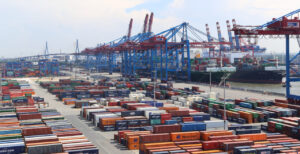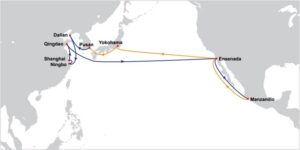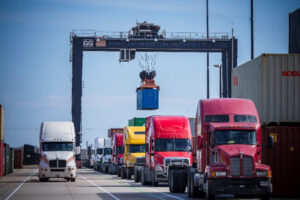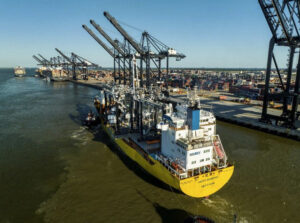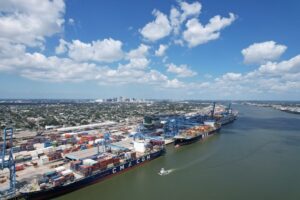The risk to container shipping from US-led trade wars is currently low, but potentially very damaging, according to the latest edition of the Container Forecaster published by global shipping consultancy Drewry.
“In the March report we said that we were hopeful of a peaceful resolution, but at this point in time we must accept that tariffs are going to become a reality.
“The only question now is: how severe will they be?” said Simon Heaney, senior manager, container research at Drewry and editor of the Container Forecaster.
From July 6, US Customs is preparing to collect additional tariffs of 25% on the first list of 818 Chinese products, worth approximately $34 billion.
A review on the second list of 284 newly recommended products covering $16 billion is also underway, while there are threats of further tariffs on as much as $400 billion of goods to follow, in response to Chinese retaliation.
The latest edition of Drewry’s Container Forecaster analyses three potential scenarios for eastbound Transpacific container trade, based on the intensity of a trade war, ranging from tariffs of $50 billion to $450 billion being applied to Chinese imports.
In the worst-case scenario, Drewry calculates that the consequences could be the container shipping market losing as much as 1.8 million TEU, or nearly 1% of world-loaded traffic.
Read about how ports and terminals are facing unprecedented challenges in 'Mega-Alliance Impact', a technical paper by global shipping analyst Neil Davidson from Drewry
As things stand, the impact from the initial two lists of Chinese products alone would be relatively insignificant at around 200,000 TEU.
Drewry research shows that revised lists announced on June 15 were heavily weighted towards industrial goods, while also being readily available from other trading partners.
China only exported about 13% of the first list of products to the US last year and around 8% of products on the second list.
“With other sourcing options available, tariff increases on Chinese goods on these initial products lists will most likely create a small amount of trade diversions and raise the prospects of other exporting partners of the US,” said Heaney.
“The current risk threat to container demand is relatively low, even when factoring in tit-for-tat measures and disputes with other trading partners, but there is clearly the potential for matters to get much darker if additional tariffs are forthcoming.
“Perhaps, the biggest risk is the unpredictability of it all and the potential confidence knock it will give to the world economy, just when it seems to be finding its feet.”
Read more:
-
A collaborative report between maritime consultant Drewry and the European Shippers’ Council has found that customers are dissatisfied with the service quality of ocean carriers
-
Deferrals mean that new containership deliveries in 2018 will not damage the supply-demand balance, according to Drewry's last Container Forecaster


